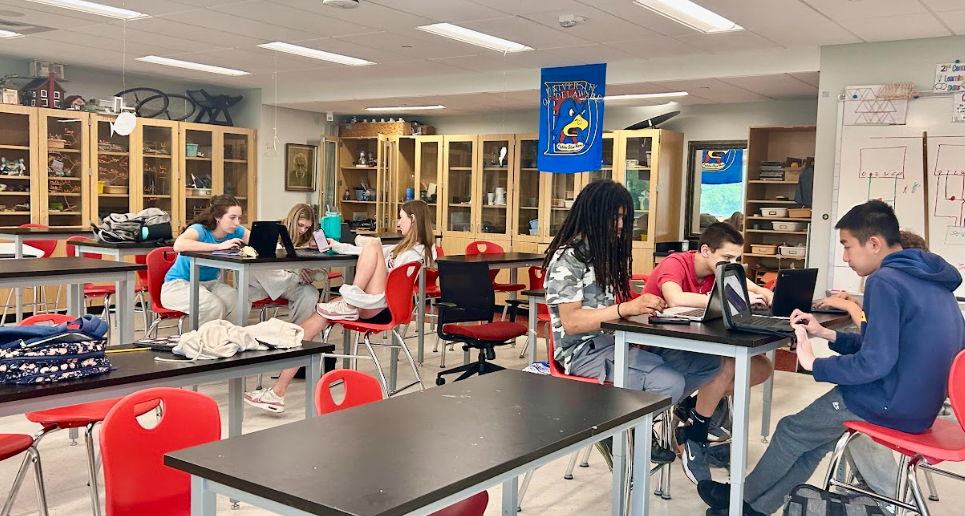As the first national park system in the world, the National Park Service (NPS) is sometimes referred to as “America’s best idea.” First established in 1916, the National Park Service provides many cultural, recreational, and economic benefits to Americans. It also preserves critical environments and sanctuaries for plants and animals that are often threatened or endangered.
Millions of people vacation at national parks because of their vast recreational opportunities, such as hiking, camping, kayaking, creating art, or just being in nature. One visitor states, “We gain perspective on what really matters…They are sanctuaries where we can heal and grow as individuals, and as a society.”
Many national parks and monuments, such as the Aztec Ruins National Monument, preserve ancient cultures, allowing us to learn from people who were here centuries ago. They also have a large economic benefit for our nation. The Congressional Research Service calculated the government spent approximately $3.475 billion on the National Park Service in 2023. That same year, the National Park Service calculated that they put $55.6 billion back into the economy from collected fees, lodging, food, and gas. NPS also calculated that visitors supported a total of 415,100 jobs, from park employees to those who work at nearby restaurants and hotels.
There is overwhelming support for national parks in America. A poll conducted by the Pew Research Center showed that the National Park Service is the most approved government agency in America, with 76% of Americans voting favorably, compared to 7% unfavorably and 17% unsure. This is one of the only government agencies in which both Democrats and Republicans approve, with 75% of Republicans and 80% of Democrats voting in favor of the NPS.
In February, the newly-established Department of Government Efficiency (DOGE), laid off approximately 1,000 of 20,000 employees of the National Park Service. Nearly all of the terminated employees were probationary employees; employees who have just been hired and are put on a “probationary period,” where their work and behavior are highly scrutinized. While probationary employees have less employee rights than permanent employees, they are still entitled to a written letter or termination notice stating the reason for firing, although they don’t need prior notice. However, many of the fired employees did not receive a valid reason for termination.
DOGE was established in January following an executive order by President Trump. It is not an official government agency because those must be created and approved by Congress; DOGE was created by the president and acts as an advisory body. While this could spark concerns over DOGE’s power and jurisdiction, many people believe that its status will make it more efficient since it isn’t limited by regulations like official government agencies. Supporter and Republican Senator Kevin Cramer stated, “I think the lack of parameters is part of what will make them effective.” DOGE’s mission is to save American taxpayers’ money, reduce US national debt, and downsize the federal government. To do this, they not only have been conducting mass layoffs, but also cutting contracts and funding deemed “unnecessary.”
However, these mass layoffs will likely be bad news for national parks, which have already been disrupted from previous staff shrinking. Florissant Fossil Beds National Monument is now closed on Mondays and Tuesdays, Carlsbad Caverns has cancelled all ranger-led tours, and long wait lines have been reported at the Grand Canyon. This problem is likely to worsen as peak season for national park visitation draws closer. Rangers, tour guides, and fee collectors aren’t the only employees at the parks; there are also rescue teams, scientists, cleaners, and other service workers who have been affected. This could pose a threat to the health and safety of the landscape, visitors, and employees.
There are also many projects in national parks that will be slowed or halted due to layoffs. The Transcanyon Waterline Project is constructing a new waterline in the Grand Canyon. The current waterline has experienced 85 breaks since 2010. Breaks often cost over $25,000 to fix and, depending on where they are located, can be dangerous to employees on the repair teams. Archaeologist Leah Gallo says this project is critical to the park. “Without it, there would be pretty much no Grand Canyon.” Mindy Riesenberg, chief of communications at the Grand Canyon Conservancy, says that this project will be held up because people who were replanting trees for shade and safety aren’t there to work anymore. Some employees reconstructing habitats destroyed by the construction were also laid off.
This isn’t the only critical project that will be interrupted. In the Lake Mead National Recreation Area, aquatic ecologist Ricky Rackliffe was one affected by the layoffs. Rackliffe was part of a two-person team that monitored bacteria, water-borne illnesses, toxic algae, and economically destructive invasive species in the park. The toxic algae is potentially lethal to humans and grows on the lake every summer, so constant testing is required. Rackliffe’s absence could place unnecessary strain on the remaining team member and create a health risk for visitors to Lake Mead. Rackliffe’s firing also seems to contradict laws concerning probationary employees. He claims, “Nobody that knew me was involved in the decision to fire me. It was all done upper level. They fired everybody that had been there less than a year,” implying that no performance checks had been conducted and there was no valid reason for his termination.
19 US states quickly filed a lawsuit against the cuts, alleging that DOGE violated laws concerning large-scale layoffs. DOGE defended itself by claiming that it wasn’t required to give an advance notice because it dismissed every employee for “performance or other individualized reasons.” However, Judge Brian Bredar sided with the states, saying, “it dismissed each one of these probationary employees for ‘performance’ or other individualized reasons…this isn’t true. There were no individualized assessments of employees.” Bredar ordered the mass terminations to cease and for previously fired employees to be reinstated.
It’s difficult to say what the full effect of these cuts will be, as the park’s busy season isn’t until late spring and summer. However, from observing the current impacts on parks, it most likely will diminish the experience and may even discourage some people from visiting at all.















